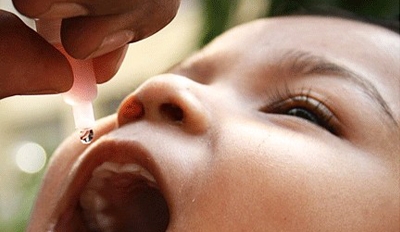Rotavirus vaccine in UIP to save medical costs, reduce mortality: PHFI study
August 09, 2014 | Saturday | Reports/white papers | By Rahul Koul Koul
Rotavirus vaccine in UIP to save medical costs, reduce mortality: PHFI study
Vaccine Boost: This study has used IndiaSim, a simulated agent-based model (ABM) of the Indian population (including socio-economic characteristics and immunization status) and the health system to model three interventions.
A study spearheaded by the Public Health Foundation of India (PHFI) has concluded that improving immunization coverage and the introduction of a rotavirus vaccine significantly alleviates disease and financial burden in Indian households. It also points to the fact that the population subgroups or regions with low existing immunization coverage benefit the most from the intervention.
Therefore, the authors of the study report of 'Analysis of Universal Immunization Program and introduction of rotavirus vaccine in India with Indianisim' have suggested that increasing coverage by targeting those subgroups alleviates the burden, more than simply increasing coverage in the population at large.
As per the report, India has the highest under-five death toll globally, approximately 20 percent of which is attributed to vaccine-preventable diseases. It says that since India's Universal Immunization Program (UIP) is working both to increase immunization coverage and to introduce new vaccines, the authors analyzed how the disease and financial burden was alleviated across India's population (by wealth quintile, rural or urban area, and state) through increasing vaccination rates and introducing a rotavirus vaccine.
The prominent experts, who were involved in the study and authored the study report include Mr Itamar Megiddo, Ms Abigail R Colsona, Mr Arindam Nandia, Ms Susmita Chatterjee, Mr Shankar Prinjad, Mr Ajay Khera, and Mr Ramanan Laxminarayanan. The study was conducted jointly by the Center for Disease Dynamics, Economics and Policy, Washington, DC, USA; Princeton Environmental Institute, Princeton University, Princeton, NJ, USA; Public Health Foundation of India, New Delhi; India School of Public Health, Postgraduate Institute of Medical Education and Research, Chandigarh and the Ministry of Health and Family Welfare, Government of India, New Delhi,
As per Dr Ramanan Laxminarayan of PHFI, the major highlight of the study is that hospitalization could be averted and impact of rotavirus vaccine will be mainly on preventing deaths and saving medical costs. "However, the limitations remain with system challenges, cost, health improvement," he added quickly.
The methodology used by the study has been carefully chosen. In the first intervention, a rotavirus vaccine is introduced at the current DPT3 immunization coverage level in India. In the second intervention, coverage of three doses of rotavirus and DPT and one dose of the measles vaccine are increased to 90 percent randomly across the population. In the third, it evaluates an increase in immunization coverage to 90 percent through targeted increases in rural and urban regions (across all states) that are below that baseline level. For each intervention, the disease is evaluated and the financial burden alleviated, costs incurred, and the cost per disability-adjusted life-year (DALY) averted.
The finding of the study revealed that the baseline immunization coverage is low and has a large variance across population segments and regions. Targeting specific regions can approximately equate the rural and urban immunization rates. Introducing a rotavirus vaccine at the current DPT3 level (intervention one) averts 34.7 (95 percent uncertainty range [UR], 31.7-37.7) deaths and $215,569 (95 percent UR, $207,846-$223,292) out-of-pocket (OOP) expenditure per 100,000 under-five children. Increasing all immunization rates to 90 percent (intervention two) averts an additional 22.1 (95 percent UR, 18.6-25.7) deaths and $45,914 (95 percent UR, $37,909-$53,920) OOP expenditure.
Scaling up immunization by targeting regions with low coverage (intervention three) averts a slightly higher number of deaths and expenditure. The reduced burden of rotavirus diarrhea is the primary driver of the estimated health and economic benefits in all intervention scenarios. All three interventions are cost saving, the study report has found.










